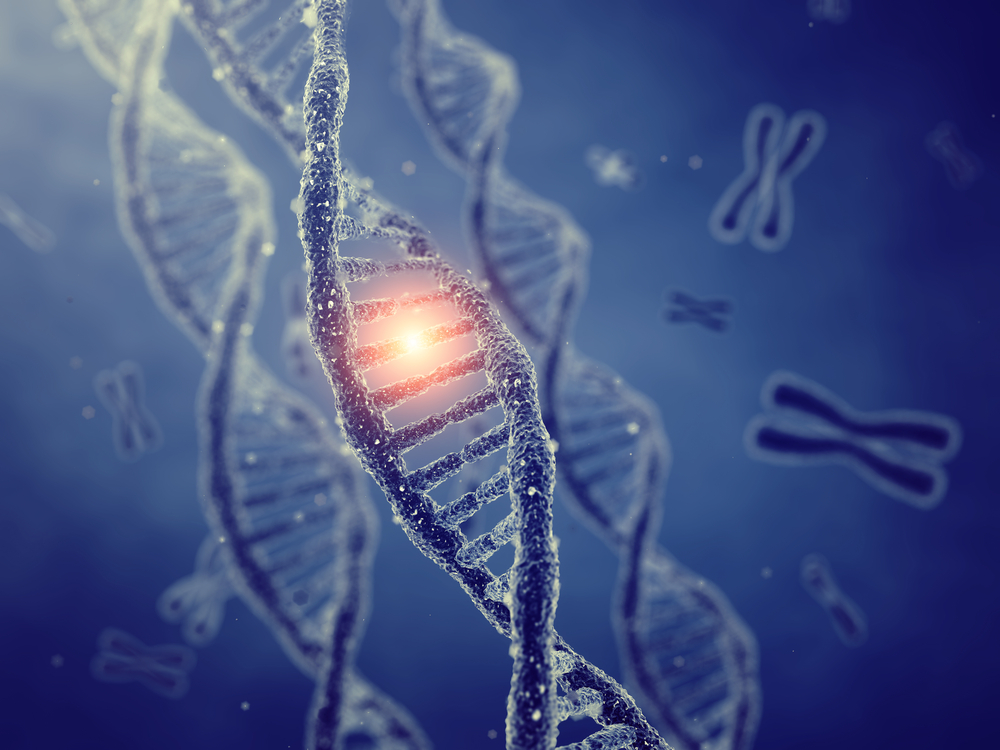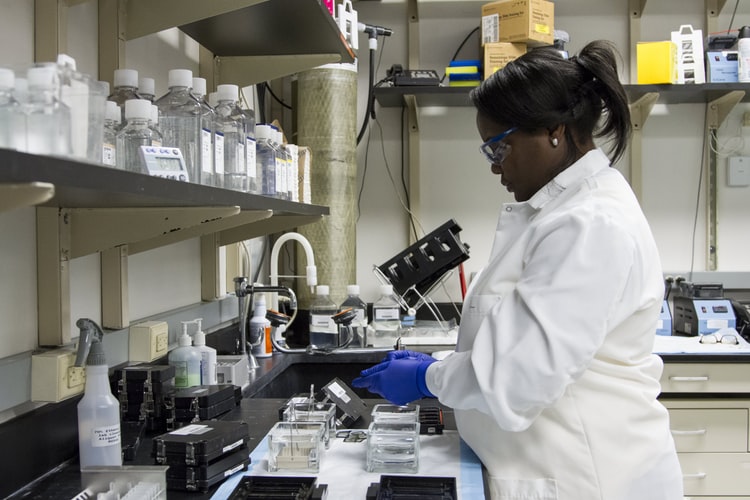
Each of us (except if we are a sibling in a multiple e.g. a twin) is biologically unique; possessing our own distinct pattern of DNA. Within our lives, we may celebrate individuality, but in the practice of medicine individuality can present a challenge; how can we help everyone when everyone is different?
Pharmacogenetics is the study of structural variations in DNA and the impact this has on biological processes. Within the context of medication, pharmacogenetics is often focused on drug metabolism, primarily the liver cytochrome P450 (CYP450) enzyme system and the resulting impact on efficacy and tolerability.
It is estimated that there is anything between 20-95% variability in drug efficacy (Bousman, 2019; Bradford, 2004). In addition, around 6-7% of hospital admissions are related to an adverse drug reaction (ADR) (Campion et al, 2019). Poor adherence to medication can be related to drug tolerability (Crews et al, 2012), leading to poor treatment of illness and an increased healthcare burden.

Within the context of medication, pharmacogenetics is often focused on drug metabolism and the resulting impact on efficacy and tolerability.
Why is this important in psychiatry?
Poor metabolism is 2–3 times more common among Caucasians (7%–10%) at the pathway that most psychiatric medications pass through: CYP2D6 (Kalow et al, 1998). However, other ethnic groups have much higher rates of poor metabolism at this pathway, particularly East Asians. East Asians from China, Korea, and Japan have high rates (20%–40%) of poor metabolism at pathways that are essential to understand in psychopharmacology: CYP2D6, CYP3A4, or CYP2C19 (Kalow et al, 1998; Bertilsson et al, 2002).
Importantly, CYP2D6 is highly polymorphic with more than 100 variant alleles and around 200-fold variability in the metabolism of at least 100 drugs (Pirmohamed et al, 2004). A characteristic specific to CYP2D6 in comparison to other CYP450 enzymes is the presence of gene duplications that may confer an ultrarapid metaboliser phenotype. As a result of these polymorphisms, four potential CYP2D6 phenotypic subgroups exist defined by the respective number of their functional alleles: poor, intermediate, normal and ultrarapid.
CYP2D6 contributes to the breakdown of 25% of the most commonly prescribed medications, including antipsychotics; it metabolises risperidone and aripiprazole to their active metabolites, 9OH-risperidone and dehydroaripiprazole respectively. CYP2D6 genotyping before starting treatment might be valuable in clinical practice for individualising risperidone and aripiprazole treatment.
The paper, “Effect of CYP2D6 genotype on exposure and efficacy of risperidone and aripiprazole: a retrospective, cohort study” is the first retrospective analysis that has been carried out comparing dose changes during routine clinical treatment with the patient’s specific genotype (Jukic et al, 2019). The findings strongly support previous claims that lower doses of aripiprazole and risperidone should be administered to CYP2D6 poor metabolisers to avoid overdosing and dose-dependent ADRs (Spear et al, 2001).

CYP2D6 genotyping before starting treatment might be valuable in clinical practice for individualising risperidone and aripiprazole treatment.
Methods
Patient data was obtained, retrospectively, from a routine therapeutic drug monitoring database in Norway from between Jan 1, 2005, and Oct 15, 2018. Patients had a diagnosis of either schizophrenia or psychosis.
Inclusion criteria:
- CYP2D6-genotyped patients
- Oral administration of risperidone or aripiprazole
- Information known about prescribed daily dose and co-medications
- ˃18 years old
Exclusion criteria:
- Polypharmacy with drugs known to be CYP2D6 inhibitors or CYP3A4 inducers or inhibitors.
There were 3 end-points:
- The metabolic ratio for risperidone and the metabolic ratio for aripiprazole (concentration of metabolite to parent drug). (concentration of metabolite to parent drug: [9OH-risperidone]/[risperidone] or [dehydroaripiprazole]/[aripiprazole]).)
- Measurement of drug exposure
- Treatment failure was estimated by the number of patients who were switched from risperidone or aripiprazole to another antipsychotic within the 1-year follow-up after the last database analysis of risperidone or aripiprazole
For the purpose of the treatment failure analysis, all risperidone-treated and aripiprazole treated patients were included without applying these inclusion and exclusion criteria.
Patient subgroups were defined by CYP2D6 genotype-determined metaboliser status: poor metabolisers, intermediate metabolisers, normal metabolisers, and ultra-rapid metabolisers.
ANOVA was used to assess the differences in metabolic ratios, active moieties, and daily doses between individual metaboliser categories, and risperidone and aripiprazole therapeutic failures were compared by logistic regression using the normal metaboliser subgroup as a reference.
Results
First
In individuals who were poor and intermediate metabolisers:
- There were increases in exposure to risperidone and aripiprazole active metabolites
- The doses of aripiprazole and risperidone were lower, but not low enough to compensate for the increased risperidone and aripiprazole exposure.
In individuals who were poor or ultra-rapid risperidone metabolisers:
- The frequency of risperidone treatment failure, as monitored by switching to an alternative antipsychotic within 1 year, was higher
The occurrence and severity of the majority of the ADRs with both of these drugs are dose dependent. The findings of this study support the suggestion that pre-emptive CYP2D6 genotyping could be valuable in the individualisation of risperidone and aripiprazole dose and optimisation of drug effects.
Second
In poor and intermediate vs normal metabolisers:
- 1.6 times increase in risperidone active moiety exposure (the sum of risperidone and 9OH-risperidone plasma concentrations)
- 1.4 times increase in aripiprazole active moiety exposure (the sum of aripiprazole and dehydroaripiprazole plasma concentrations).
In poor metabolisers:
- Clinicians reduced daily doses of risperidone by 19%
- Clinicians reduced daily doses of aripiprazole by 15%.
It is likely that the dose reductions in relation to the CYP2D6 genotypes are based on dose-dependent ADRs. However, 19% and 15% reductions in the doses of risperidone and aripiprazole were insufficient to compensate for the increase exposures observed in poor metabolisers. If information from pre-emptive CYP2D6 genotyping were used, the actual dosing would be lower than observed for patients with reduced CYP2D6 function.
Throughout the treatment period, the psychiatrists were completely unaware of the CYP2D6 genotyping of the patients. The changes in dose and switching of medication were done on observed clinical outcomes. The results provide evidence that patients with low CYP2D6 enzyme activity were given the drugs at too high a dose, while patients with high enzyme activity were given the drugs at too low a dose. As a consequence, many of them switched medication. In patients with too low or too high activity of the CYP2D6 enzyme, treatment failed to a larger extent, most likely due to ADRs and lack of efficacy, respectively. Without knowing which CYP2D6 gene variant the patient had, the psychiatrists had in the main altered the dose based on the clinical outcome, and this correlated with the anticipated effects of the patient’s specific CYP2D6 genotype. However, the dose changes were insufficient to avoid side effects or lack of effect.

In patients with too low or too high activity of the CYP2D6 enzyme, treatment failed to a larger extent, most likely due to adverse drug reactions and lack of efficacy, respectively.
Conclusions
Considerable variation exists in the efficiency and amount of CYP2D6 enzyme produced between individuals. Hence, for drugs that are metabolised by CYP2D6 (that is, are CYP2D6 substrates), certain individuals will eliminate these drugs quickly (ultra-rapid metabolisers) while others slowly (poor metabolisers). If a drug is metabolised too quickly, it may decrease the drug’s efficacy while if the drug is metabolised too slowly, adverse drug reactions (ADRs) may result.
Ultimately, the findings support previous claims that lower doses of antipsychotics should be administered to CYP2D6 poor metabolisers to avoid overdosing and dose-dependent ADRs.
The authors also state that the CYP2D6 genotype had a substantial clinical effect on risperidone and aripiprazole exposure and on the therapeutic failure of risperidone. In addition, pre-emptive CYP2D6 genotyping would be valuable for individualising risperidone and aripiprazole dosing and treatment optimisation.

The authors’ findings support previous claims that lower doses of antipsychotics should be administered to CYP2D6 poor metabolisers to avoid overdosing and dose-dependent side-effects.
Strengths and limitations
A large number of patients were included in this study which enabled accurate quantification of the effect of CYP2D6 genotype on risperidone and aripiprazole exposure and the number of patients with treatment failure, at a high statistical power. Previous studies in this area have had small to moderate numbers of patients (Spear et al, 2001).
The majority of limitations arose from the retrospective nature of the study which is acknowledged by the authors. There was no data relating to patients’ comorbidities, occurrence of CYP2D6 rare variants, and data about psychosis severity and treatment outcome. As a result, not all of the variability in risperidone and aripiprazole metabolism by CYP2D6 genotype could be explained. Even though CYP2D6 genotype-defined subgroups were profoundly different, it is very clear that CYP2D6 genotype alone is not sufficient to predict all aspects of risperidone and aripiprazole metabolism variability. Patients were not genotyped for CYP2D6 rare variants so this may have resulted in misclassification of some patients. Psychiatrists did have access to information about their serum concentrations of the drugs (routine measurements of blood concentrations of aripiprazole and risperidone isn’t done in clinical practice within the UK), but it was not known whether firstly this information was accessed or used and if so how it was used to inform dose changes.

A large number of patients were included in this study which enabled accurate quantification at a high statistical power.
Implications for practice
The author’s evaluation of their findings in the discussion of their paper is pragmatic and they provide some very useful information about their findings within the current context of this particular subject.
Evidence was provided for the first time that the poor and ultra-rapid CYP2D6-mediated metabolism leads to an increased chance of risperidone therapeutic failure in the naturalistic settings analysed.
The results could help form part of an evidence base for the formulation of clinical guidelines or recommendations about dosing of based on CYP2D6 metaboliser status metabolisers. Currently, only the US Federal Drug Agency (FDA) and the Royal Dutch Pharmacists Association – Pharmacogenetics Working Group (DPWG) make any firm recommendations about dosing relating to CYP2D6 status. But the specific recommendations made by the FDA and the DPWG are not consistent with those made by the authors of this study – is it time for a review?

Specific recommendations made by international agencies are not consistent with those made by the authors of this study. Is it time for a review?
Future studies
In this study, CYP2D6 genotype was only able to account for half the variance in risperidone and aripiprazole. It is clear, therefore, that this is only one piece of the puzzle. In order for us to benefit fully from the results of CYP2D6 genotyping, it must be done in conjunction with a comprehensive set of clinical data (e.g. renal function). Patients taking CYP2D6 inhibitors were excluded from this study. Concomitant CYP2D6 inhibitors such as fluoxetine or citalopram (not uncommon in clinical practice) can alter the predicted metaboliser status (e.g. from normal to a poor), which may have important implications.
Pharmacogenetic testing has been around for more than a decade, but has been slow to catch on in mental health due to multiple barriers. These include the lack of guidelines, unclear clinical validity, variability in available tests, and cost. Access to validated testing that have high rates of accuracy, precision, repeatability and reproducibility across multiple platforms must also exist if this is to be utilised effectively.
Future research also needs to find out what practicing mental health prescribers (e.g. doctors, pharmacists) feel about doing this type of testing and how confident they are in terms of knowledge and skill in being able to use the results to effectively inform their prescribing practices. Another controversy lies in the question: Who do we test? Do we reserve pharmacogenetic testing for individuals with a long list of treatment failures? Realistically, if a careful history is taken to elucidate why each medication failed for a patient, and a working knowledge of the CYP450 metabolic pathway for each agent is held, then determination of the pharmacokinetic profile might actually be easy, without the need to do any tests.
Overall, pharmacogenetic testing has the potential to be beneficial in optimising treatment for patients by avoiding adverse drug reactions and maximising efficacy, but further robust evidence is needed before we can confidently use this to its full potential.

In this study, CYP2D6 genotype was only able to account for half the variance in risperidone and aripiprazole, so this is only one piece of the puzzle.
Statement of interests
No conflicting interests.
Links
Primary paper
Jukic MM, Smith RL, Haslemo t, Molden E, Ingelman-Sundberg M. Effect of CYP2D6 genotype on exposure and efficacy of risperidone and aripiprazole: a retrospective, cohort study. The Lancet Psychiatry 2019;6 (5): 418-426.
Other references
Bousman CA. CYP2D6 testing to guide risperidone and aripiprazole therapy (comment). The Lancet Psychiatry. 2019;6(5):362-364
Bradford LD. CYP2D6 allele frequency in European Caucasians, Asians, Africans and their descendants. Pharmacogenomics 2004; 3(2): 229-243.
Campion DP, Dowell FJ. Translating Pharmacogenetics and Pharmacogenomics to the Clinic: Progress in Human and Veterinary Medicine. Frontiers in Veterinary Science 2019;6:22. doi: 10.3389/fvets.2019.00022
Crews KR, Hicks JK, Pui CH, Relling MV, Evans WE. Pharmacogenomics and individualized medicine: translating science into practice. Clinical Pharmacology and Therapeutics 2012;92(4):467-475
Kalow W, Tang BK, Endrenyi L. Hypothesis: comparisons of inter- and intra-individual variations can substitute for twin studies in drug research. Pharmacogenetics. 1998; 8:283–289.
Bertilsson L, Dahl ML, Dalén P, Al-Shurbaji A. Molecular genetics of CYP2D6: Clinical relevance with focus on psychotropic drugs. British Journal of Clinical Pharmacology. 2002; 53(2): 111–122.
Pirmohamed M, James S, Meakin S, Green C, Scott AK, Walley TJ, Farrar K, Breckenridge AM. Adverse drug reactions as cause of admission to hospital: prospective analysis of 18 820 patients. British Medical Journal 2004;329:15–19.
Spear BB, Heath-Chiozzi M, Huff J. Clinical application of pharmacogenetics. Trends in Molecular Medicine 2001;7(5):201–204.
Wei MY, Ito MK, Cohen JD, Brinton EA, Jacobson TA. Predictors of statin adherence, switching, and discontinuation in the USAGE survey: understanding the use of statins in America and gaps in patient education. Journal of Clinical Lipidology 2013;7(5):472–483.
Whirl-Carrillo M, McDonagh EM, Hebert JM, et al. Pharmacogenomics knowledge for personalized medicine. Clinical Pharmacology and Therapeutics 2012; 92: 414–417.
Photo credits
- Photo by National Cancer Institute on Unsplash
- Photo by Michael Longmire on Unsplash
- Photo by National Cancer Institute on Unsplash
- Photo by Hal Gatewood on Unsplash
- Photo by James Orr on Unsplash
- Photo by Burst on Unsplash
- Photo by Gabriel Crismariu on Unsplash
